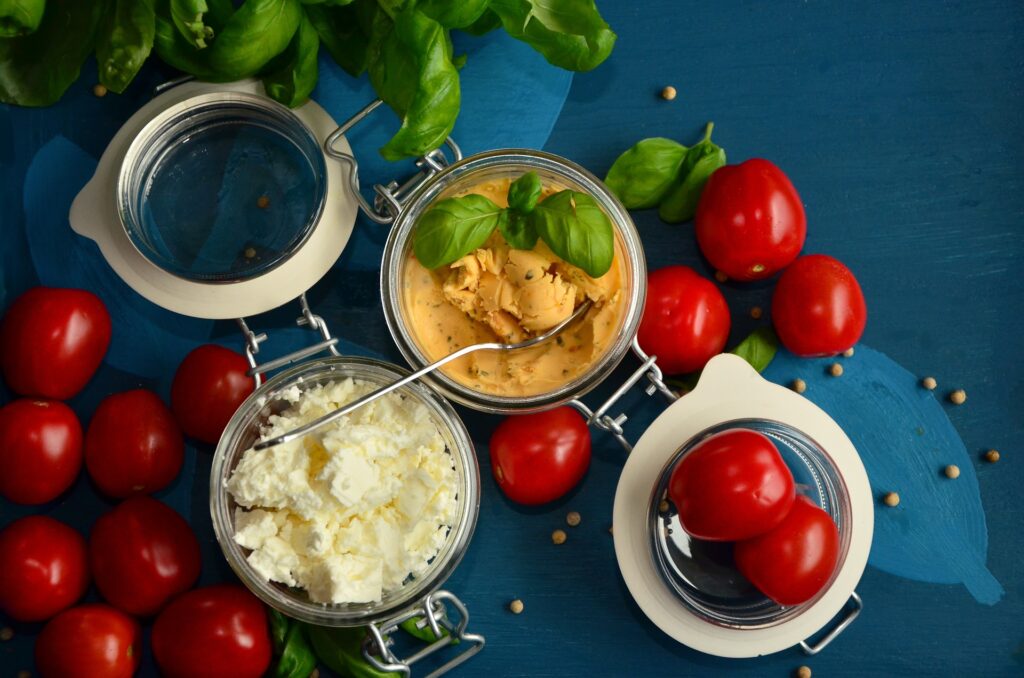January, or as it should probably be renamed detox month. A great many people will be embarking on a fast, cleanse or detox come January 1st. While I commend them for their efforts to better their body, it’s very important to know the differences between a fast, detox or cleanse are. As well as why you plan to do it.
But most importantly is HOW to detox safely.
Fasting does not HAVE to mean to go without food for 12 hours. In fact, if you don’t practice fasting regularly, it’s not recommended to go without any nutrients for such a long period of time. You may even be doing a disservice to your body.
There are many ways to fast (or detox);
- By eliminating a food
- Simply drinking liquids for the day
…but starving yourself should not be an option.
Detox (ing)
The process of eliminating processed foods and consuming whole foods, thereby allowing your organs to function at their full potential. For example, not feeding yourself things that tax your system unnecessarily.
My Personal Little Story
I learned about fasting (or detox) from my Guru/Spiritual Master.
Not long after I met him he explained to me the reasons we fast and the necessity. He, and those Masters who came before him, practised Ayurvedic Medicine and Holistic Healing (Ayurveda is the Father of ALL modern science and medicine) throughout their entire lives. I believe it to be necessary to let you know that the following was not something that I made up or read in a book, it has been practised by great Masters for generations with benefits you cannot begin to imagine.
On with our story..
My then boyfriend (now husband, thankfully), who had met our Guru many years before, had been fasting much longer than I, 30 days at a time with no salt, 3 times a year. He wasn’t starving, he didn’t look or feel sick and went through his days normally. It didn’t seem like a big deal to me so I decided, of my own free will, to attempt one of these 30 day fasts.
Of course, being the person I was at the time, I didn’t bother to consult my bf, and worse yet, my Guru, to learn how to safely start, proceed through and finish.
I had not set an intention that I would consider sincere.
Since I had always struggled with my weight, I just thought this would be a great way to beat the bulge, so to speak. In short, my intentions came from a place of pride (thinking I could do this on my own) and vanity.
I decided to just copy what I saw my boyfriend was doing. And, I didn’t bother to ask details about how he got to that stage of his fasting, how he felt and compensated for the lack of nutrients etc. I figured this can’t be rocket science, I just won’t eat food that has salt in it, no big deal.
Needless to say, within 48 to 72 hours I was starving.
I was dizzy, I had headaches, and I was angry and agitated at everything!
My Guru had a good laugh at my expense and said to me – Now that you’ve done it your way, would you like to learn the right way? Of course I tucked my tail between my legs and said, yes.
Here’s what I learned.
1. Fast or Detox?
First you have to figure out which of the two you would like to do, as they are different. For the purpose of this blog we’ll say you’ve decided to do a fast.
2. Set an intention for your detox
You must set an intention as to why you are going to do this. From personal experience, I’ve learned over the years, that if my intention is for vanity, I’m sure to fail and give up early. But when I have set my intention for a greater purpose, ie. to elevate my thoughts and generally learn how to become a better human, nothing was able to tempt me or sway me. Don’t get me wrong, I understand that everyone’s intentions are different and their experience and resilience is different, I am only speaking about me and what I have learned about myself.
3. Preparing and Duration Part A
i) Adjust your mindset – if you have decided to do a fast, it is unwise to just jump into it. Fasting is a process that you must prepare your mind and body for first. Your mind controls your body (so to speak), but YOU control your mind, despite what it might be telling you. Once you’ve decided you’re going to fast, you must start working on your mindset, adjust your thinking by making yourself aware of your intentions.
ii) What kind of fast – based on your current state of health, after consultation with your health practitioner, you need to decide what kind of fast are your going to do? If you’re a non-vegetarian you might choose to make your fast vegetarian. Or maybe you want to do a no salt fast, which eliminates many things, but keeps the good stuff (good meaning what your body needs).
iii) Duration – how many days will you be fasting? If you’ve never fasted in the past, then 30 days is not for you. 10 days might be ok, but don’t be surprised if all you can handle at first is 5 days. A 3 day fast is not recommended as a beginners fast because there is no time for your mind or body to adjust for fasting and re-starting. Either way, the duration of your fast is important to know ahead of time to adjust your mindset.
iv) Stock your pantry and fridge – physically you need to prepare my making sure you’re well stocked on the items you’re going to consume, so that you don’t enter starvation mode because you didn’t plan.
4. Preparing Part B
Now that you’ve set an intention as to why you want to do this fast, you’ve decided how long it will last and you’ve mentally prepared it, it’s time to actually perform the fast.
Let’s use the example of a 5 day no salt fast.
It’s not difficult, but not very easy at first either. It is a good way to introduce fasting to your system.
Before you start your fast, 6 to 7 days previous, start weening yourself off the foods that you would normally eat, that will not be permitted during your fast. So for example, on a no salt fast, you will not be eating anything processed, so only fresh fruits, veggies, legumes, grains, nuts, seeds, herbs and spices. No sauces, unless you’ve made them from scratch yourself. No dairy.
I’m vegetarian.
So, I have little to no idea about the availability of unsalted meats, but as a cook, I DO know that meat cooked without salt tastes terrible. Long story short, start eliminating these items from your diet and kitchen a little at a time, AND START introducing more fruits and veggies to compensate.
The reason you should go through the weening process is not only to help your body to slowly adjust to the change in diet, but also for your mind to adjust to new eating patterns to avoid failure, headaches and dizziness.
5. Fasting Process
So you’ve taken 7 days to ween yourself off of the foods that are not permitted during your fast, now you’re ready to begin your fast.
i) Start – with your warm lemon water in the morning
ii) 45 min later – have some fresh berries with a handful of raw (preferably soaked) almonds (not more than 12).
iii) Liquids – throughout the day drink warm water that contains seeped ginger, cumin, coriander, fennel, turmeric, cardamon, and/or clove, with pure honey (honey that does not include added sugar). Not necessarily altogether, but combinations of the ingredients are good.
iv) Smoothies – blended room temperature vegetable smoothies (no fruit) with nuts and seeds or unsalted vegan protein powders are also great to have before the lunch hours of 12-2 begin.
v) Lunch – can be a hearty salad filled with vegetables (no fruit, no dairy), with a homemade dressing of herbs, apple cider vinegar and good quality olive oils. Lentil/bean and vegetable soups, with a bit of rice or quinoa, all unsalted of course, but filled with beautiful herbs and spices will make a great meal, especially if you fill the soup with cruciferous veggies.
vi) Snack – nuts, seeds, and or a fruit, but not fruit salad. Eat only like fruits together ie, berries or apples or a banana, but never together. Nut butter, homemade hummus with veggies are all good choices.
Again drink your warm teas.
vii) Dinner – similar to lunch – hearty soup and hearty salad.
viii) Finish the night – with a couple of cups of turmeric tea or tea of your choice.
Follow this system, or one close to it for 4 of the 5 days, as long as you are not pregnant, diabetic or have a major illness. Always consult with your health practitioner first, in case you are unaware of an ailment you may have.
MOST IMPORTANT – remember your intention. Fasting is not only a physical process, it is a mental one too. During your time of fasting, make a conscious effort to not stress over anything, don’t sweat the small stuff, as they say.
Take time to think before you speak and/or react. Take no offence to the words and actions of others, and try to remain positive or at least neutral about everything. Start your day with affirmations like – Today I choose to be happy, today I choose to meet any challenges with positivity, etc.
Keep in mind that you can only control your thoughts and actions, not that of others, so set no expectations on anyone. While eating, think positive, happy thoughts. Enjoy your meal in silence, if at all possible.
6. Ending
Of your 5 day fast, 4 days could be like the above mentioned in #5. Make your last day liquids, if you really want to, but don’t feel bad if you decide not too.
Blended room temperature vegetable smoothies or blended room temperature fruit smoothies are a great way to end your fast. Make sure to intersperse your warm teas. Yes, you will urinate A LOT! So don’t plan any long excursions for this day.
7. Restarting a normal eating pattern
Just as you had to ween yourself off certain foods for the start of the fast, you must slowly introduce foods back into your system.
The first day after your fast or detox has been completed, will start the same way like your fast – warm lemon water, berries with nuts, then a dairy-free fruit or vegetable blended smoothie. Lunch should be heavier on the carbs than you’ve had over the past 5 days, but still vegetarian, eg. mixed rice with beans or peas and veggies, or a light stir fry with rice and veggies, and a salad. Dinner would be similar. The difference this time is that you can add salt to your food and/or sauces that contain salt.
The second day starts as the first up to lunch.
At lunch you can now introduce things like sandwiches or pasta with salad. Hummus and veggies for snack, a light protein with veggies for dinner.
By the 3rd day after your fast, from lunch onward, you can resume your “regular” eating pattern.
I hope you find the above information helpful. Once I learned the ropes, so to speak, and got a couple fasting sessions under my belt, it all became a breeze. According to Ayurvedic Medicine, fasting once per week is a good practice to take up, but only once you’ve become used to it.
If you’re not sure of what to eat or how to prepare it, contact Ki’s Kitchen. Not only do we run cleanses/detox/fasting programs for our clients regularly, I’ve been cooking “fasting food” or no-salt food for my husband 3 times a year for 30 days at a time for over a decade now, so I can help if/where needed.
What is the takeaway from all this?
Fasting is actually about taking control of your mind and body, realising that you are capable of much more than you currently think. It all begins with your mindset.
Furthermore, Thank you so much for visiting! I hope you have found some valuable information, if so, I’d love to hear about it!
Please feel free to share this post with anyone who might benefit, and comments are always welcome!
I look forward to connecting with you next time!
And be sure to check out why you should order your family’s next meal courtesy of Ki’s Kitchen

From our kitchen to yours,
Love + Peace
Kiran
Before you go! Tune into our Facebook Page on how YOU can earn a free meal courtesy of Ki’s Kitchen!







This was really helpful and informative as I am fasting for Navraatri. It was also a good reminder to deeply consider why we are fasting and set our intention. Thank you!